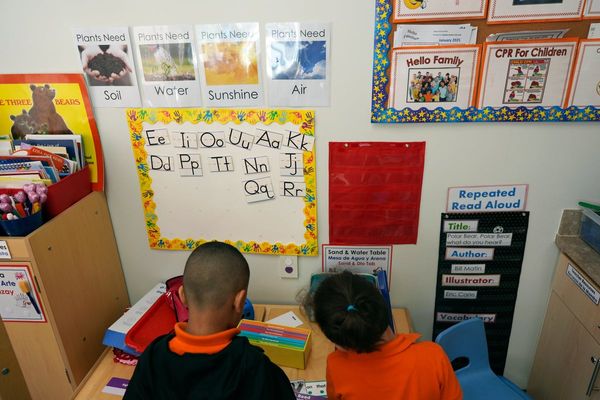
There is a tiny new elite at the frontier of money-making and they are known as the centibillionaires. These titans of the universe have personal assets of at least $100bn, and there are now 14 of them in the world – up from six last year. You will find them listed, compared and celebrated by the Bloomberg billionaires index and the Forbes world’s billionaires list, which has just been published.
Thanks to these annual tallies of the superwealthy, we know that 2,781 people worldwide – 141 more than last year – have personal wealth of $1bn or more. And that Taylor Swift is now one of them. And that their collective wealth – about $14.2tn – is more than the GDP of any country except the US and China. But centibillionaires are this group’s porous top tier, described by Forbes as those who have “done much better than the average billionaire”, and their wealth is unimaginable to most of us.
The list points to where in the world the largest piles of money are made. Ten of the 14 centibillionaires are American. One is French – Bernard Arnault, the world’s richest man. Mukesh Ambani, No 9, is Indian; Amancio Ortega, No 13, who owns the clothing chain Zara, is Spanish; and Carlos Slim Helú, No 14, is a Mexican telecom entrepreneur. None are from the UK, which has 55 mere billionaires, fewer than in previous years.
So, how do centibillionaires make so much money? They operate in prime money-expanding sectors, including fintech – Michael Bloomberg is No 12 – and finance, especially hedge funds and private equity holdings. Warren Buffett (No 6) of Berkshire Hathaway is a good example. But tech is the main engine of centibillionaire wealth generation, including for Jeff Bezos (No 3, Amazon), Mark Zuckerberg (No 4, Facebook), Bill Gates (and Steve Ballmer (Nos 7 and 8, both Microsoft), and Larry Page and Sergey Brin (Nos 10 and 11, both from Google). Forbes’s list also points to high street fashion, luxury consumption and property speculation, often a lucrative side hustle.
The calculations on which the rankings are based do leave room for exaggeration. The listed fortunes of tech companies, in particular, are estimates based on their growth and potential at some time in the future when they may be sold. After all, Forbes has not seen the centibillionaires’ tax returns; instead it works on best estimates.
It also tells us very little about who centibillionaires are as people – except that they are all men. (Although the L’Oréal heiress Françoise Bettencourt Meyers is 15 on Forbes’s list with a $99.5bn fortune, just under 13% of billionaires are women.) What do we know about the richest people in the world? Not much – and that seems to be the way they like it. Fleeting glimpses of centibillionaires in the business pages usually stick to their money-making exploits, and anything more personal is filtered by the public relations companies they retain. But piecing together what is known about the world’s richest man might provide a few clues about who centibillionaires are and how to become one.
Arnault made his estimated $233bn selling exclusive products to other rich people through his luxury brand LVMH. But Arnault comes from a wealthy French family who owned a construction company. Tip No 1: start near the top. He is married to a pianist and has five children. Tip No 2: minimise expensive divorce settlements. Billionaires often pay heavily for marriage break-ups – Bill Gates has been bumped down to No 7 on the Forbes list by his. And tip No 3: keep it in the family. All of Arnault’s children have some stake in the family business.
The Arnault fortune is managed by a single office, set up in 1978, which controls investments, making sure the “family’s wealth is used to its full potential”. A large portfolio of investments in tech, venture capital and properties ensures that its large pile of money grows. Tip No 4: capital and asset accumulation work to make centibillionaires richer and turn billionaires into centibillionaires. In other words: generally, the rich get richer.
Tip No 5: give money away to good causes, it’s a good look. Arnault contributed to the rebuilding of Notre Dame, and his foundation has built a public art gallery to house his extensive art collection – a further source of family speculation and accumulation. He has donated to the Chinese and the Ukrainian Red Cross, to fighting fires in the Amazon, to French public hospitals. He may give much more privately, but these public contributions by LVMH work out as roughly the percentage equivalent of the average French family donating between €25 and €50.
Tip No 6 – and this comes from the tech firms: minimise tax liabilities where possible. Tax Watch regularly reports on major US tech companies in the UK and the arrangements they make to reduce their tax liability. Centibillionaires don’t trust governments to spend their money properly.
Centibillionaires behave much like the billionaires training to join their club. They get exceptionally rich because the financial system operates to their advantage. They profit from a game most people cannot afford to play. This game involves large stakes in the stock market, private equity and hedge funds; cartels open only to the wealthy; and large property portfolios. Meanwhile, the rest of the world grapples with a cost of living crisis, with ever rising levels of homelessness.
The US has 10 centibillionaires and 755 billionaires who have more money than any of them can spend in their lifetime. It also has 37 million people living in poverty. Isn’t it about time for some serious redistribution? Tax the rich. Fully implement the global minimum tax so that tech firms and other global players pay their fair share. Unless there are serious political efforts at redistribution such as these, this gap between the super-rich and the rest will only widen.
Caroline Knowles is global professorial fellow at Queen Mary University of London, and the author of Serious Money: Walking Plutocratic London
Do you have an opinion on the issues raised in this article? If you would like to submit a response of up to 300 words by email to be considered for publication in our letters section, please click here.







